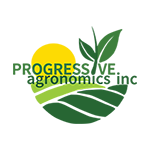While Sudden Death Syndrome and Brown Stem Rot steal the spotlight in most soybean disease discussions, there is another disease that plagues soybean production in the northern geographies, White Mold. White Mold can take a high yielding field from 80 to 20 BU./A., so farmers are constantly looking for solutions to combat this devastating disease. Thankfully, we are gaining more and more insight as to how we can use multiple management techniques to avoid significant yield loss from White Mold.
Identification:
Just as the name implies, White Mold is a white mold/fungus. We typically see infection of this disease at the R1 and R2 growth stage; however, the visual symptoms may not appear until four to six weeks later. The fungal spores enter the plant through the early flowers. Therefore, identifying it is quite simple – pull back the canopy and loos for the white fungus symptoms about 1/3 up the plant from ground level. Typically, White Mold will infect in the most productive area of the field where the plant canopy is the thickest.
Conditions That Cause White Mold:
Moist, cool conditions favor the development of White Mold, which is why the disease is must more common in northern geographies especially the Great Lakes region. Narrow rows (less than 20 in.) and excessive plant populations can exacerbate the disease by creating a micro-climate effect with just the right conditions for White Mold development (less than 85 F and high humidity). As previously mentioned, White Mold typically shows itself in the most fertile areas of the field, especially where there are excessive soil nitrate levels that cause the plant to grow unnecessary amounts of foliage.
Management:
Unfortunately, there is no “silver bullet” solution to White Mold, but there are a few management tips that, when used in combination, can help significantly reduce White Mold development.
Varietal Selection: Choose varieties that have shown to be more defensive to White Mold. These varieties are often more “thin lined” in plant architecture, which allows fore more air movement through the rows.
Manage Population and Row Spacing: Beck’s Practical Farm Research (PFR) has proven over seven years of multi-location research that a seeding rate of 100,000 seeds/A. provides the highest ROI. This is especially true in White Mold prone fields where a lower seeding rate is critical to improving air flow at the base of the plants.
Fungicide Applications: A planned fungicide application at the R1 and, in extreme cases, R2, time frame can protect the flowering structures from White Mold infection. Be sure that the fungicide you are using is rated for White Mold suppression.
Track and Scout: Track conditions that promote the development of White Mold. The University of Wisconsin Integrated Pest and Crop Management team has developed an exciting new smartphone app that allows growers to predict the need for a fungicide application based on weather data and canopy conditions for a specific field.
The app, Sporecaster, is free and has shown to be quite accurate. It is available for both Android and iOS operating systems.
To help our customers that deal with White Mold, our Wisconsin PFR location will be performing a White Mold-specific management study in 2019. This study will look at multiple fungicide products as well as timings to suppress the development of White Mold. Be sure to look for the results in the 2019 PFR book!
~ Ben Puestow, CCA – Field Agronomist
